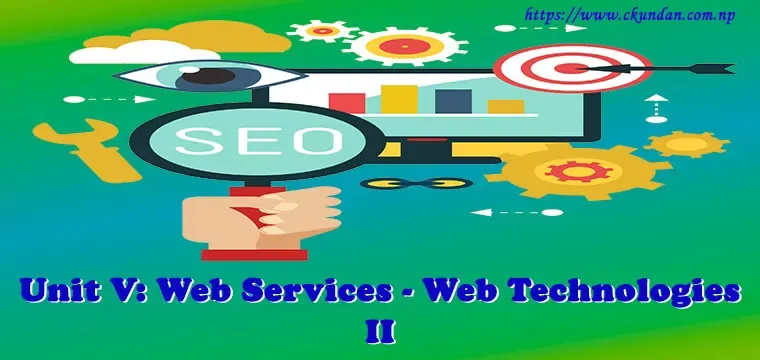Web services are XML-based information exchange systems that use the Internet for direct application-to-application interaction. These systems can include programs, objects, messages, or documents. A web service is a collection of open protocols and standards used for exchanging data between applications or systems.
In this “Web Services - Web Technologies II” you will learn about following topics:
- Introduction to Web Services
- Web Service Features
- Web Service Architecture
- Advantages of Web Services
- Service-Oriented Architecture (SOA)
- Major Roles within Service-oriented Architecture
- Components of SOA
- Guiding Principles of SOA
- Advantages of SOA
- Disadvantages of SOA
- Practical Applications of SOA
- Web Service Components
- SOAP (Simple Object Access Protocol)
- Elements of SOAP
- Remote Procedure Calls (RPC) Representation
- SOAP Encoding Structure Data
- WSDL (Web Services Description Language)
- Structure of a WSDL Document
- WSDL Elements
- Concept of UDDI
- RESTFul Web Services
- RESTful Key Elements
- Restful Methods
- Advantages of RESTful Web Services
- Difference between SOAP and REST
==== Point to Note ====
If you like to contribute, you can mail us BCA Notes, BCA Question Collections, BCA Related Information, and Latest Technology Information at [email protected].
See your article appearing on BCA Notes (Pokhara University) main page with your designation and help other BCA Students to excel.
Please write comments if you find anything incorrect, or you want to share more information about the topic discussed above.







![BCA 1st Semester Question Papers Pdf [Updated]](https://blogger.googleusercontent.com/img/b/R29vZ2xl/AVvXsEjP3Me_J0B0ZWTmnrJmogmmrj5uN8yT0cMoGo1Ay15Rfzm_J76hOoUKXMYOGidJcr1xf-9inJ4Ea-i01MtvHTeQnGiWm98TSUK5XAYlpuXiszuRUrY6kJVhxEl5Rar4F1_Rh-S9d6oY_Kk/w72-h72-p-k-no-nu/BCA+1st+Semester+Question+Papers+Pdf.webp)
0 Comments